
Obviously something made that hole. And that something is likely living in the hole.
Could a snake be the occupant of said hole?
The short answer is yes. Some snakes dig holes and live in them.
And in what may be some bad news, many snakes steal holes that other animals dug.
This means that even if you know a hole in your yard is made by a gopher, or some other harmless animal, a snake may have taken it over.
But now some good news: most snakes are harmless themselves.
Nevertheless, I understand that many people will not be happy at the prospect of a snake living in their yard.
How likely is it?
Keep reading to learn if all snakes live in holes, what kind of holes they live in, and everything else there is to know about the subject.
Table of Contents
- 1 Do Snakes Live In Holes?
- 2 Do Rattlesnakes Live In Holes?
- 3 Do Garter Snakes Live In Holes?
- 4 Do Copperheads Live In Holes?
- 5 Do Snakes Dig Holes To Live In?
- 6 Why Some Snakes Live In Holes
- 7 How To Tell If A Snake Is In A Hole
- 8 What Size Hole Can A Snake Get Through?
- 9 What Does A Snake Hole Look Like In The Yard?
- 10 Where Do Snakes Sleep At Night?
- 11 Where Do Snakes Hide In A House?
- 12 Snakes Live In Holes: Final Thoughts
Do Snakes Live In Holes?
Some species of snakes do live in holes and burrows. However, most do not construct these holes or burrows themselves.
Instead, they use the burrows left behind by rodents, turtles, frogs, crayfish, and other small burrowing animals. For that reason, it is difficult to identify a snake burrow.
Not all snakes live in holes. They also live in tree hollows, boughs, and under leaf litter, rocks, and bark. The snakes that live in holes have adapted to living in them.
Do Rattlesnakes Live In Holes?
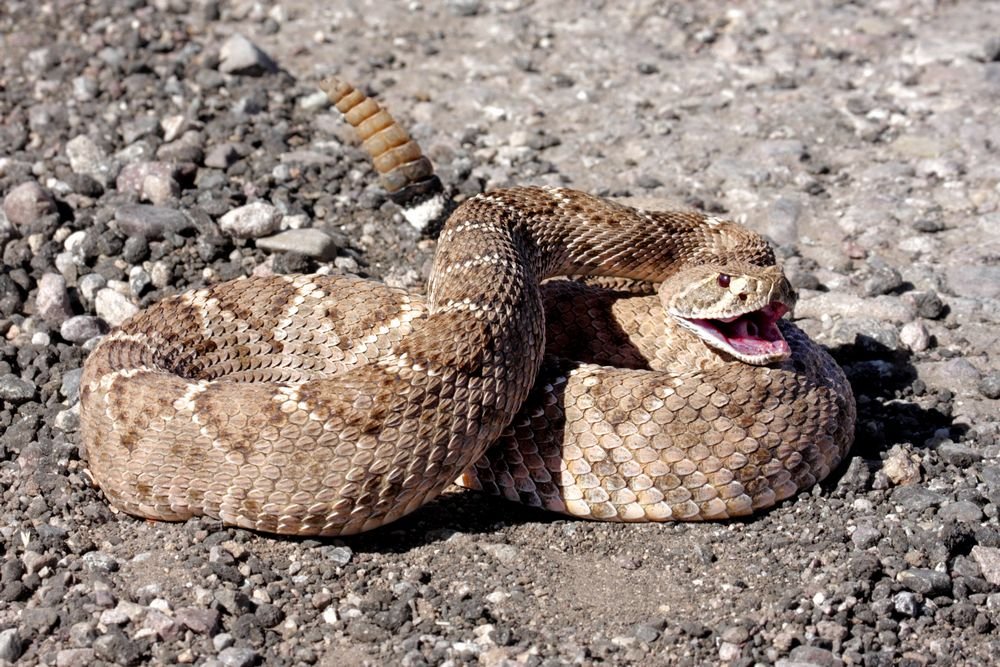
Rattlesnakes brumate in any natural holes they can find. This can be a hole dug out by another animal, a hollow tree, crevices in rocks, and just about anything else that offers protection and warmth. For that reason, finding a rattlesnake den can be tricky.
These snakes also live all over the United States. Where do rattlesnakes live? They call 46 of the 50 states home. Only four states do not have any species of rattlesnakes.
Do Garter Snakes Live In Holes?
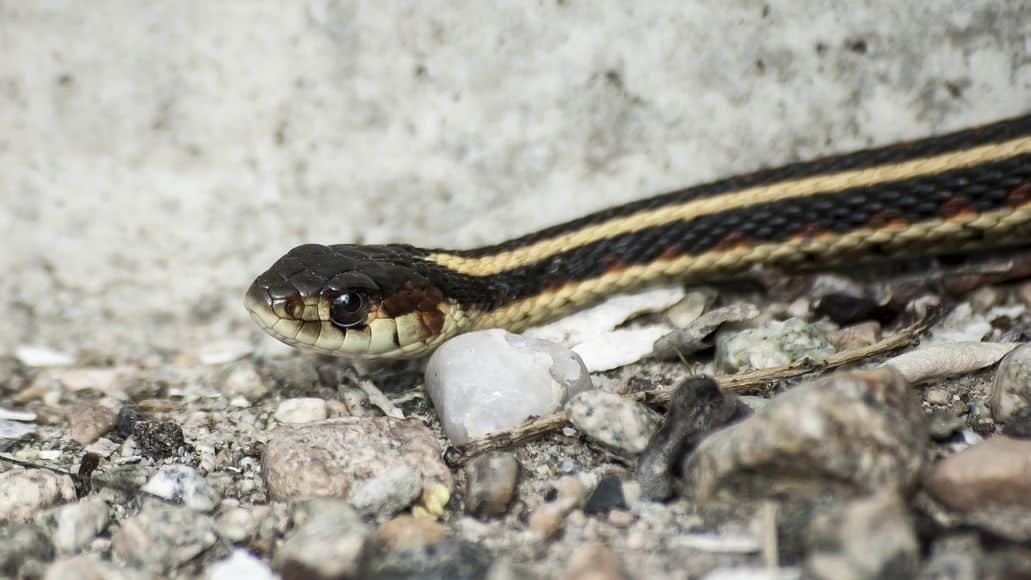
Garter snakes hibernate in whatever natural cavity they can find. This can be just about anything, including the burrows of other animals. If you keep this species as a pet, make sure you provide enough substrate. Garter snakes like to burrow.
Do Copperheads Live In Holes?
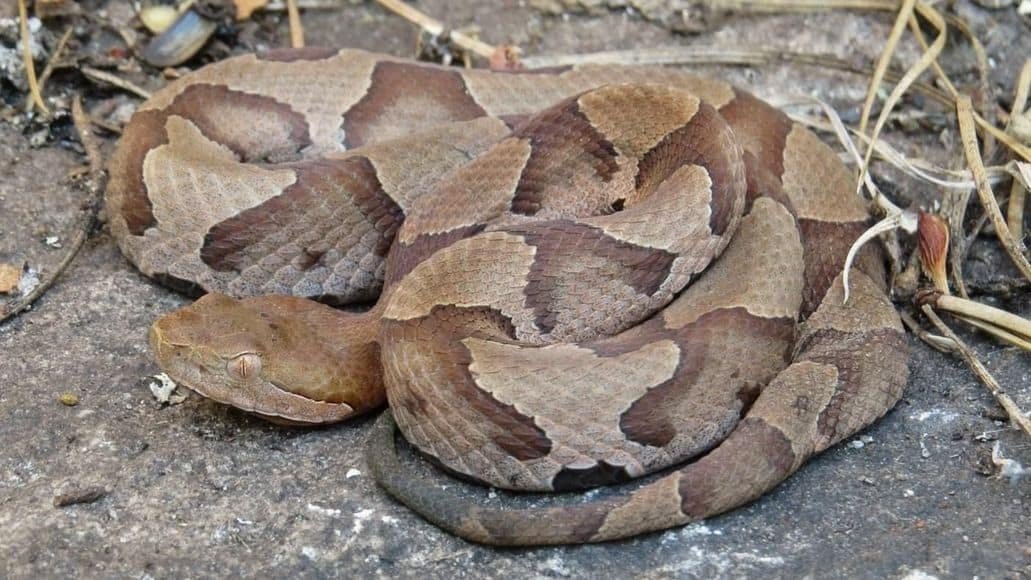
Copperheads also do not exclusively live in holes, but they will definitely take over another animal’s burrow, if the opportunity presents itself.
Do Snakes Dig Holes To Live In?
As mentioned, the majority of snakes that live in holes do not dig the holes themselves. They take over existing dens and burrows of other animals.
The most famous exception in the hognose snake. It has adapted to become a digging expert. One look at its adorable upturned nose shows you exactly how it adapted. Learn all about the hognose snake here.
Why Some Snakes Live In Holes
As mentioned, not all species of snakes live in holes. And the ones that do not generally make the holes themselves, with the hognose snake being the most famous digging exception.
Most hole-residing species of snake take over the burrows burrows of other animals, like crayfish, turtles, frogs, and rodents.
These holes are ideal for snakes, because they offer protection from predators, as well as from harsh weather. What temperature do snakes come out? In general, snakes like temperatures between 68° and 80° Fahrenheit. Any colder or hotter and they prefer to stay in their holes.
Moreover, the holes often have an abundance of prey for the snakes to eat, i.e. the former residents. Let’s take a look at these, and other, reasons snakes live in holes.
Some Snakes Have Adapted To Living In Holes
Snake species like ball pythons have thin necks and constricting bodies that allow them to easily slither into tiny tunnels and holes made by rodents and termites.
Indigo snakes (found in the southeastern states of the United States) have developed a strong bite and an ability to thrash their prey in cramped quarters like tunnels and burrows to support their hole-dwelling lifestyles.
Another major adaptation for snakes living in holes is their slippery bodies. Their highly polished scales enable snakes to slither easily into holes with minimum friction and abrasion.
Alternatively, larger species of snakes that live in burrows often have rough, keeled scales that move obstructing rocks easily to facilitate easier sliding into cramped spaces.
Finally, as mentioned, the hognose snake has adapted a special nose to help it dig. It is one of the few species that actually digs its own hole to live in.
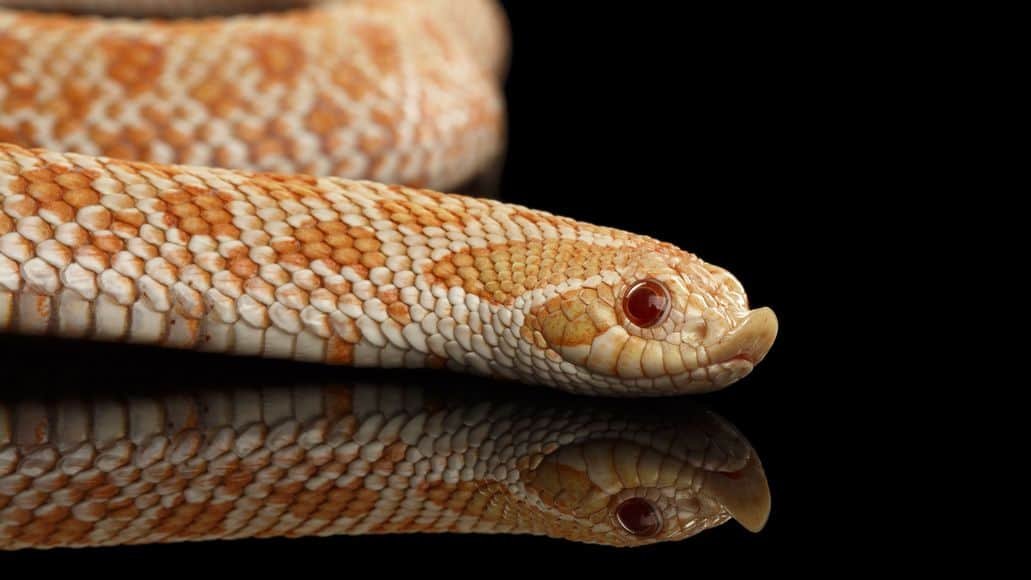
Holes Offer Snakes Convenient Food Choices
Snakes that live in holes often find a variety of food in the holes. For example, some species of snakes eat rodents, frogs, turtles, and crayfish that live in those burrows.
Smaller species of hole-dwelling snakes eat snails, slugs, worms, insects, and other smaller snakes living in these areas.
Holes Help Snakes Escape Predators And Harsh Weather
Burrows and holes help snakes escape overhead predators like birds and also the heat and cold. For example, the Timber Rattlesnakes that are found in the northern states like Maine hide in deep burrows and rock crevices to escape the harsh cold.
Sometimes, Timber rattlesnakes live in large numbers inside such crevices, since there are not many burrows and crevices available for each snake.
When warm weather arrives, the snakes conveniently mate with partners that are readily available in the same burrow, before dispersing off to avoid unnecessary competition.
Many desert snakes burrow into the sand to escape the heat. Desert sand gets cooler as the snakes dig deeper away from the soil’s surface. This provides them with protection from the harsh sun and also prevents water loss from their bodies.
Note that desert snakes are unable to create holes or burrows, since the sand’s loose structure does not retain the shape. What desert snakes actually do is simply bury themselves in the sand.
How To Tell If A Snake Is In A Hole
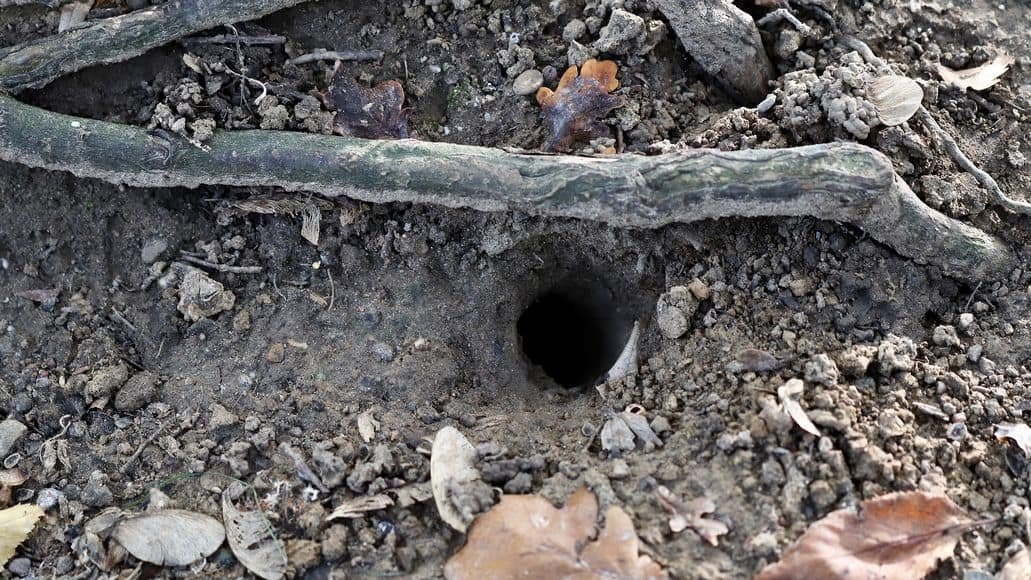
The thought of a snake living inside a hole in your yard can be scary. Thankfully, several tell-tale signs indicate there may be a snake in the hole.
The Type Of Soil
The kind of soil you have in your yard can make a difference in inviting snakes to burrow in it. Not all terrestrial snakes are equipped for making holes or moving tightly packed hard soil.
Most snakes are only capable of burrowing through leaf litter and loose soil. Of course, this does not stop snakes from taking over any existing holes other animals may have created in your yard.
The Hole’s Previous Occupant
As mentioned before, snakes usually occupy holes made by chipmunks, mice, Prairie dogs, other rodents, etc.
If you have holes left behind by these furry critters in your yard, chances are that they are now occupied by snakes, particularly if your neighborhood is known to have snakes.
Snake species like gopher snakes, milk snakes, and black racers tend to eat these small animals and then steal their homes.
The Shape Of The Hole
The shape of the hole is also an indication of whether it is a snake’s hidey-hole. Snake holes are circular (the ones they create themselves, of course, not the ones they steal).
They are also usually found in grassy parts of the yard. You might also find snake holes in dry and cracked concrete, as well as burrows in tree stumps and large branches.
Freshly Shed Snake-Skin Or Snake Feces
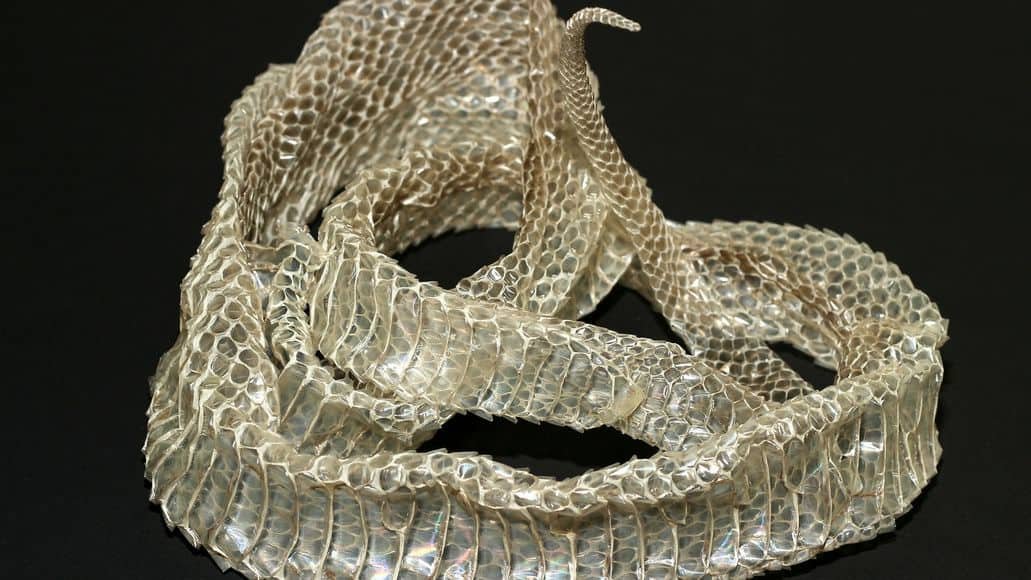
If you find freshly shed snakeskin or snake feces around the hole, then there is a high possibility that there is a snake inside the hole.
Snake feces looks like dark brown smears with white endings. The size of the feces conforms to the snake’s size, while its placement can help you determine where the snake was recently active and also the direction it may have traveled. And snakes do not travel far from home, most of the time.
Signs Of Snake Movement
Some snake holes show signs of the movement of snakes around them. For example, there won’t be any spiderwebs, or other debris like fallen leaves, around the hole’s entrance.
What Size Hole Can A Snake Get Through?
The size of the hole a snake can get through depends on the species of the snake. Most small snakes can easily enter buildings through cracks and crevices that are no more than 1/8th inches wide. Of course, snakes cannot enter through very tiny holes such as keyholes.
However, most small snake species can easily squeeze through tiny openings. Their slimy bodies and slippery scales allow them to easily pass through small holes without friction or abrasion.
What Does A Snake Hole Look Like In The Yard?
As mentioned, snake holes are usually circular with varying diameters and depths. You will find them in areas with a bit of grass and also under piles of dirt, logs and tree stumps, leaf litter, and rocks.
The diameter and depth of the holes can vary greatly based on the size of the snake. As mentioned earlier, holes and burrows of other critters like rodents and mice can also be snake holes.
If you have multiple snakes in your yard, then you might find multiple holes. If you are worried that you have snakes in your yard, please call a professional exterminator to deal with them. Only use snake traps yourself, if you know what you are doing and you are positive the snakes are not venomous.
Where Do Snakes Sleep At Night?
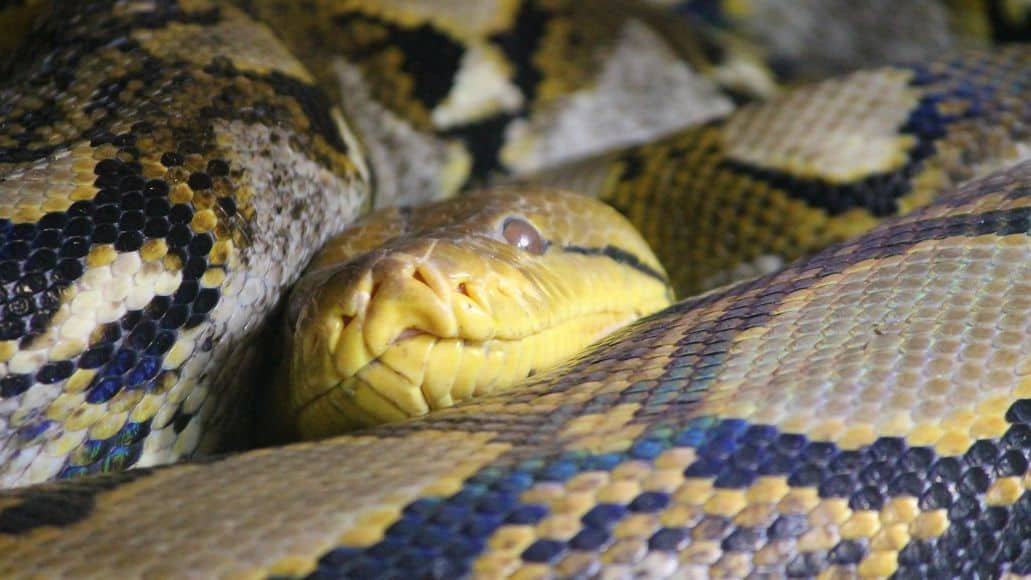
Where snakes sleep usually depends on the snake species and the environment.
Most snakes sleep after they have fed. They search for an area that can protect them from predators as well as the weather. They look for hiding places that offer them protection, comfort, and safety.
If you have a pet snake, you might find that it sleeps under or inside the hideouts you may have provided in its enclosure, like rocks, caves, boxes, pipes, etc.
In the wild, snakes look for cracks and crevices, dead tree stumps, fallen logs, natural caves, rocks, and burrows or holes left behind by small animals like turtles, frogs, and rodents.
Generally, they search for a sleeping area that will protect them from harsh weather and also offer safety from predators.
Where Do Snakes Hide In A House?
Once a snake finds its way inside a house, it will head toward hiding areas due to its shy nature. Mostly, snakes seek crawl spaces in basements or other rooms that are dark and have plenty of hiding spots.
Snakes are cold-blooded creatures that need warmth to keep their body temperatures up, so they also seek hiding spots near heating units, water heaters, heating vents, laundry rooms, etc.
Areas with clutter and debris are also favorite spots for snakes to hide. Usually these are found in garages and basements.
Piles of blankets, cardboard boxes, firewood logs, and tarps are some other favorite hiding areas for snakes inside homes.
Snakes are also attracted to places that have bugs and rodents. Usually, these are found in the kitchen since there is plenty of food here for these critters. Snakes might even hide under kitchen pipes or the sink, where food sources are plentiful.
Snakes Live In Holes: Final Thoughts
Snakes are creatures of opportunity. When it comes to shelter, they need a place that offers protection from the elements and from predators.
Holes tend to provide them exactly what they need. However, few snakes are capable of digging their own holes. No surprise, given their lack of limbs.
For that reason, species of snakes that live somewhere with naturally occurring holes will happily live in them. These naturally occurring holes can include dens and burrows that have been dug out by other animals. These actually make for common snake dens.
Leave a Reply